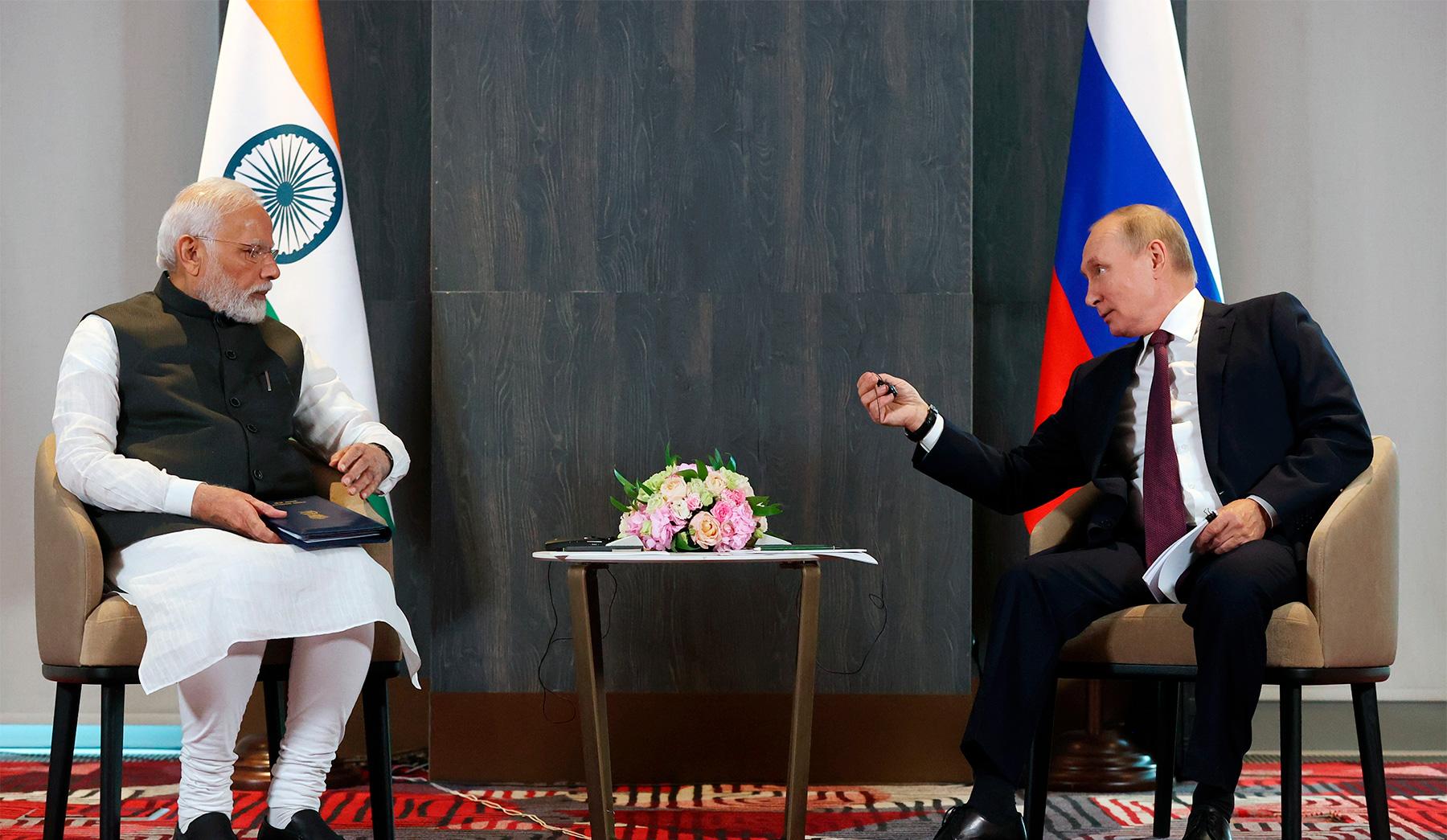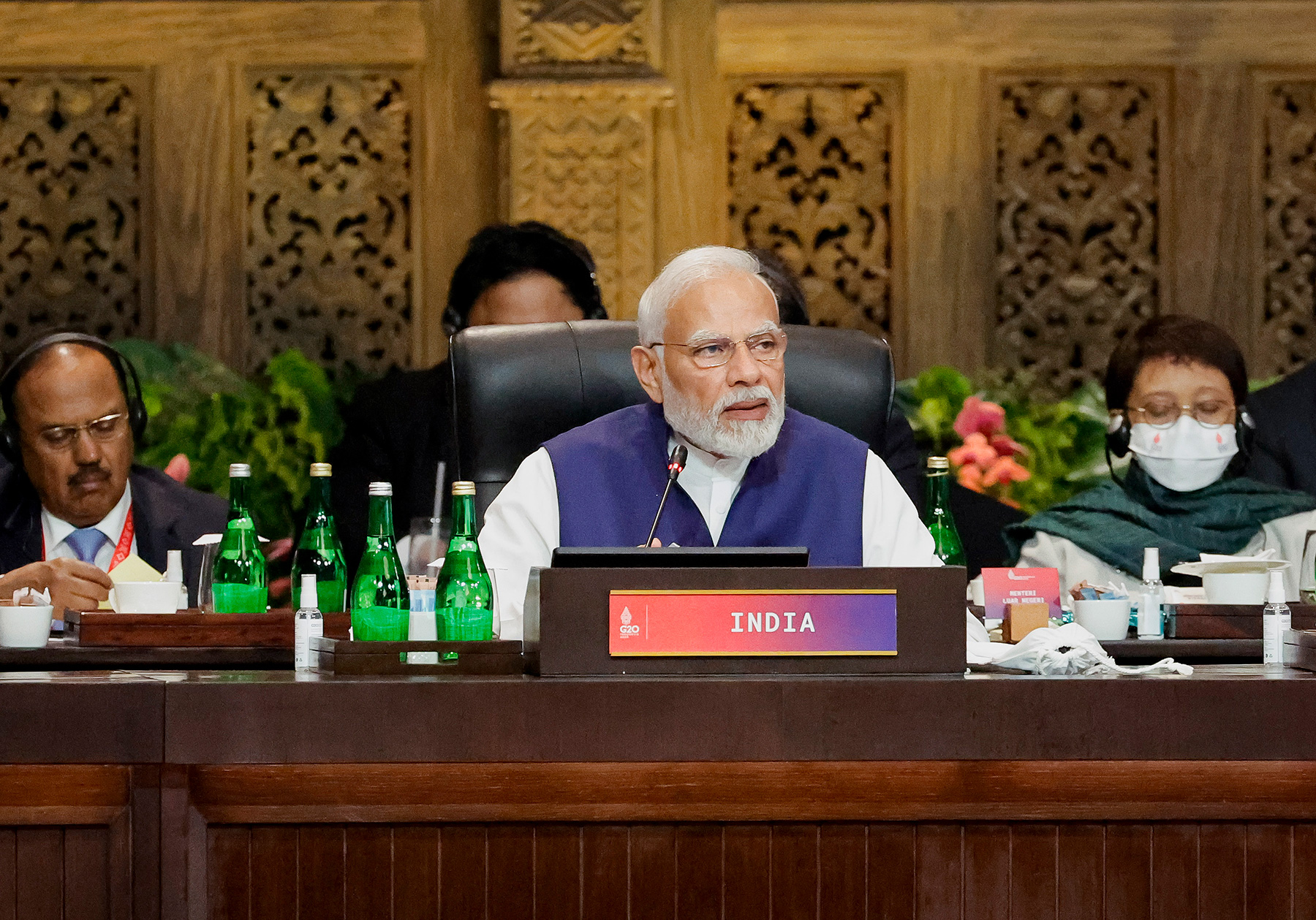New Delhi’s long-standing strategic partnership with Russia has witnessed some growing turbulences in its bilateral engagements since military action broke out in Ukraine. Still, India has the advantage of having cordial relations with the largest geographical country in the neighboring region, Russia. Despite the fact that Western nations have been pressurizing New Delhi to call out “Russian aggression” in Ukraine publicly, it has held its ground in not conceding its long-term strategic partnership with Russia in lieu of Western assurances. India’s decades-long partnership with Russia has also enabled a significant portion of New Delhi’s arms imports. The relations have also secured its immediate interests in buying Russian crude oil, which particularly caters to India’s domestic needs. Moreover, these actions are a testimony to the integral part Moscow plays in New Delhi’s foreign policy calculations.
India now finds itself delicately balancing the two opposing poles. This, however, also presents it with the opportunity to expand its global influence by negotiating for peace under the current circumstance the world finds itself into. With a greater say in both the Western world and in Russia, New Delhi can present an alternative that sheds the light towards a peaceful resolution in the ongoing conflict.
New Delhi’s orientation in extending its focus towards the Eurasian region also stems from its historical as well as cultural connect with many of the countries existing in Central Asia. Its presidency of the SCO is the very exact moment that can prove to be a watershed event in India’s bilateral endeavor of expanding its outreach to Eurasia as well as positioning itself as a worthy global power. Hence, India’s attention in presenting itself as a major power will only be appreciated globally if it indeed manages to follow through on such an endeavor—to reconnect and develop a region that has mostly been isolated from the influential spheres of the global economy. Thus, concrete action-oriented developmental initiatives such as the ones discussed above, need to be followed upon to project New Delhi’s comprehensive global vision for engagement in the Eurasian region.
New Delhi’s long-standing strategic partnership with Russia has witnessed some growing turbulences in its bilateral engagements since military action broke out in Ukraine. However, India’s strategic autonomy in its foreign policy decisions-making has by and large prevented the country from taking specific sides between the poles that have emerged since the conflict began early last year. These factors have also positioned the Eurasian region to become a strategic gateway for India to maintain its influence in and around its north-western neighborhood, especially when prospects of instability in both Afghanistan and Pakistan have begun challenging the regional interests of New Delhi.
Since the demise of the Soviet Union and the emergence of in republics of Central Asia (CARs), countries from the Eurasian region have gone on to become strategically important not only for safeguarding India’s foreign policy interests but also for securing the global leadership role that New Delhi is standing at the cusp of Eurasia, a region which is generally understood to be encompassing countries that were erstwhile under the Soviet shadow, is more generally known for its historical linkages to South Asia and, more importantly for our understanding, with India.
Russia, which sits as a neighbor to all of the republics of Central Asia, is considered to be quite influential in the region as well due to its geographically encompassing presence. Apart from defense cooperation, India has also begun investing in connectivity projects in the recent years, transforming economic growth for the region as a whole. India’s initiative of Connect Central Asia policy is in line with a similar strategy; to connect both the regions politically, economically, culturally and in the same process rejuvenate the historic relations between the two large landmasses. Initiatives such as these also help in extending New Delhi’s purview of regional development through trade, connectivity as well as comprehensive security—an agenda it has been advocating for decades.
A concrete example of such endeavors is the International North-South Transport Corridor (INSTC), initiated between India, Russia and Iran in 2000. The 7200 km long corridor has been ratified by 13 countries until now in the Eurasian region including Turkey, Azerbaijan, Belarus, Bulgaria, Armenia, Kazakhstan, Kyrgyz Republic, Oman, Tajikistan amongst other. The long-stretching multi-network connectivity program, which includes sea, rail and road lines connecting Mumbai to Saint Petersburg through the Chabahar aims to provide faster alternatives in connecting Europe, Russia with the Central, West and South Asian regions. Initial projects under the larger ambit of the initiative have also begun taking shape with the INSTC’s eastern branch beginning operations in July 2022 operating through India, Iran, Kazakhstan and Turkmenistan. This not only reduces the travel time between trade connectivity but is also a model to explicate a comprehensive multilateral initiative that integrates as well as develops economies mutually.
Above and apart from connectivity initiatives, India’s engagement with the CARs is also gaining prominence due to New Delhi’s dual presidency of the Shanghai Cooperation Organization (SCO) as well as the Grouping of 20 economies (G20). The SCO, particularly comprising China, Kazakhstan, Kyrgyzstan, Russia, Tajikistan, Uzbekistan, India, and Pakistan, covers over 60% of the Eurasian landmass and is pivotal for India’s outreach towards the region. Throughout different occasions, New Delhi has also emphasized the need for greater cooperation in domains such as infrastructure development, energy, and connectivity to enhance regional economic growth and prosperity. These prospects not only have the potential to significantly reduce the security issues faced by the member-states of the SCO but is also an advent for greater regional development that the region has been lacking for decades.
Moreover, India also has the advantage of having cordial relations with the largest geographical country in the neighboring region, Russia. Despite the fact that Western nations have been pressurizing New Delhi to call out “Russian aggression” in Ukraine publicly, it has held its ground in not conceding its long-term strategic partnership with Russia in lieu of Western assurances. India’s decades-long partnership with Russia has also enabled a significant portion of New Delhi’s arms imports. The relations have also secured its immediate interests in buying Russian crude oil, which particularly caters to India’s domestic needs. Moreover, these actions are a testimony to the integral part Moscow plays in New Delhi’s foreign policy calculations.
India now finds itself delicately balancing the two opposing poles. This, however, also presents it with the opportunity to expand its global influence by negotiating for peace under the current circumstance the world finds itself into. With a greater say in both the Western world and in Russia, New Delhi can present an alternative that sheds the light towards a peaceful resolution in the ongoing conflict.
New Delhi’s orientation in extending its focus towards the Eurasian region also stems from its historical as well as cultural connect with many of the countries existing in Central Asia. Its presidency of the SCO is the very exact moment that can prove to be a watershed event in India’s bilateral endeavor of expanding its outreach to Eurasia as well as positioning itself as a worthy global power. Hence, India’s attention in presenting itself as a major power will only be appreciated globally if it indeed manages to follow through on such an endeavor—to reconnect and develop a region that has mostly been isolated from the influential spheres of the global economy. Thus, concrete action-oriented developmental initiatives such as the ones discussed above, need to be followed upon to project New Delhi’s comprehensive global vision for engagement in the Eurasian region.







